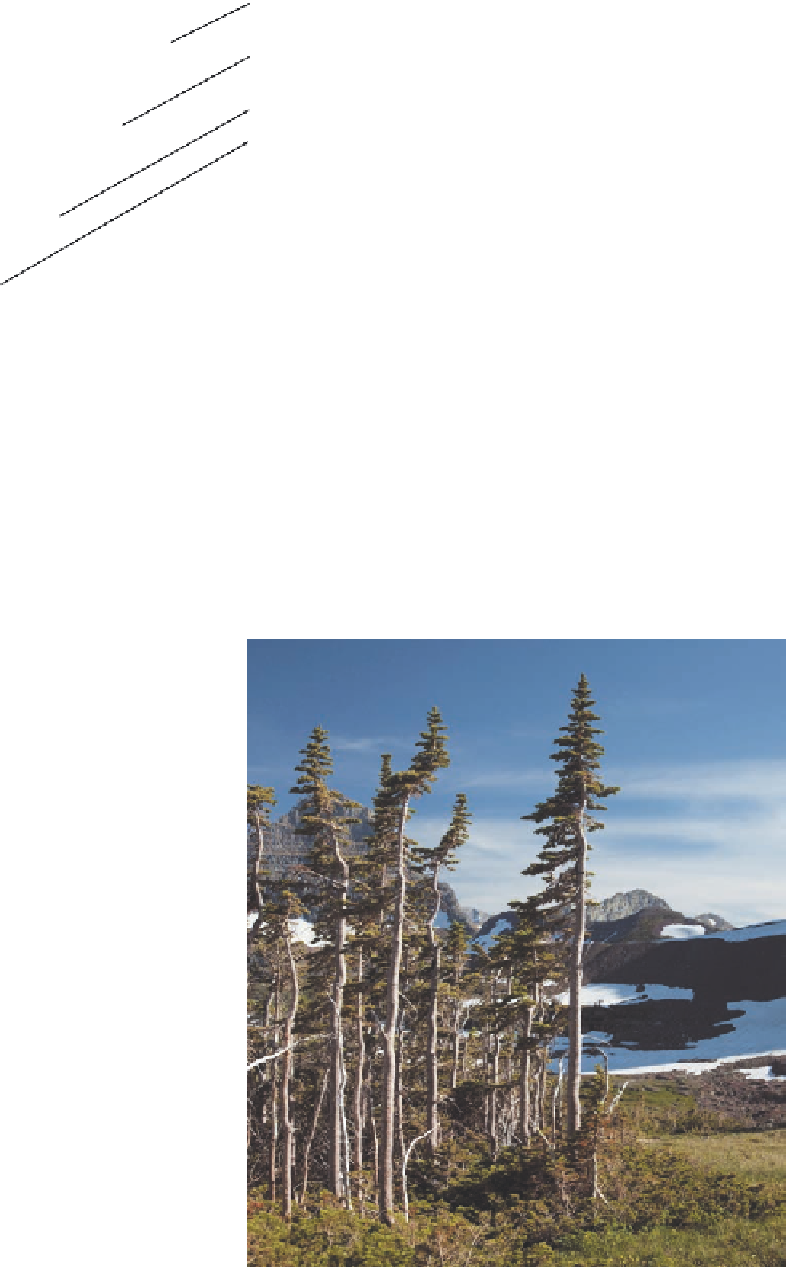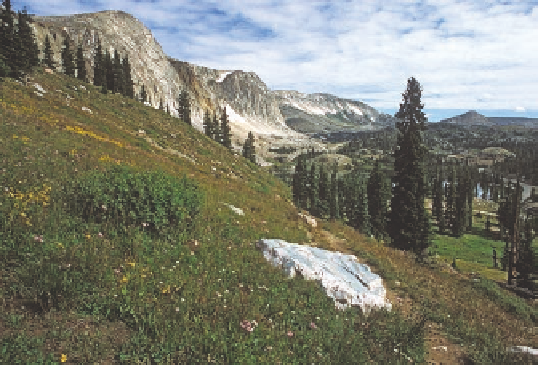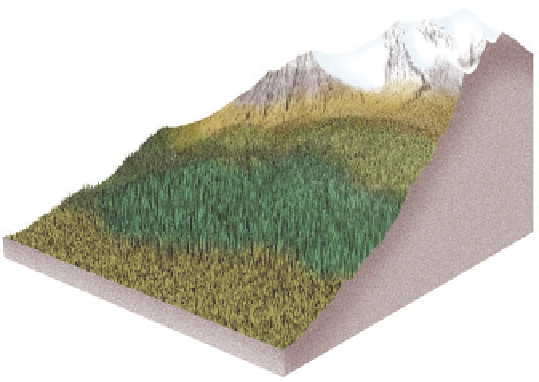Geoscience Reference
In-Depth Information
Snow cap
Moss, lichen,
alpine grasses
Figure 10.21 Vertical zonation of
vegetation in the European Alps.
Note the changes in vegetation that
occur with elevation.
Alpine grassland
and isolated shrubs
3000 m (10,000 ft)
Tree line
2000 m (6600 ft)
1000 m (3300 ft)
Coniferous
forest
500 m (1640 ft)
Deciduous
forest
consists of deciduous forest. As you move to about 1000 m
(3300 ft), the vegetation gradually shifts to coniferous trees that
are adapted to cooler conditions.
At about 2000 m (6600 ft), the vegetation shifts from trees
to alpine grassland and scrub vegetation. The elevation where
trees can no longer grow because conditions are too harsh is
called the
tree line
. At still higher elevations, the vegetation
becomes tundra (Figure 10.22), and, ultimately, the landscape
is covered with snow and ice.
When do environmental conditions become too harsh to
support trees? The critical variable appears to be that seasonal
mean temperature registers at least 6.5°C (43.7°F) at a depth of
10 cm below the ground where roots grow. You are probably
most familiar with
alpine tree
line that occurs at high elevations
in the mountains, above which are only scattered tundra, bare
rocks, and even perpetual snow. Although alpine tree line exists
in all major mountain ranges on Earth, a distinct pattern exists
with respect to latitude and altitude, with the elevation decreas-
ing progressively with increased latitude. Another kind of tree
line is called
circumpolar tree line
and is the highest latitude
at which trees can grow. Regardless of whether the tree line is
alpine or circumpolar, the appearance is the same, consisting of
scattered trees that are stunted and deformed. Such an area is re-
ferred to as the
Krumholz
zone, which literally means “crippled
wood.” In these areas, trees are often bent in a particular direc-
tion that reflects the prevailing winds (Figure 10.23).
Tree line
The line that represents the upper limit in mountains
and high latitudes where environmental conditions support the
growth of trees.
Figure 10.22 Alpine vegetation in the Snowy Range in
Wyoming.
The scattered trees, which are similar to high-latitude
boreal forest, grade upward into tundra. This is an excellent
example of vertical zonation.
Figure 10.23 A tree line landscape.
Trees at the circumpolar
or alpine tree line are often dwarfed and scraggly because of the
harsh environmental conditions. Can you tell the direction (left to
right or right to left) of the prevailing winds in this photo?









